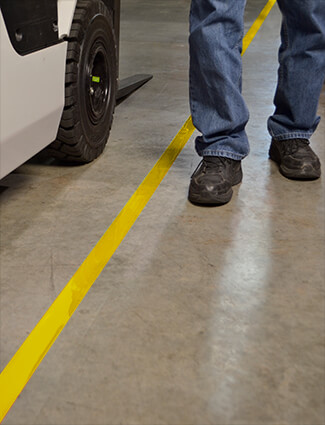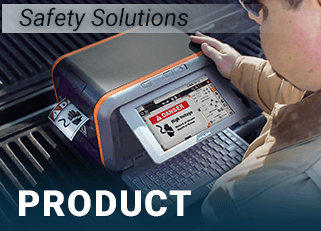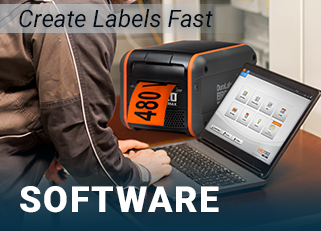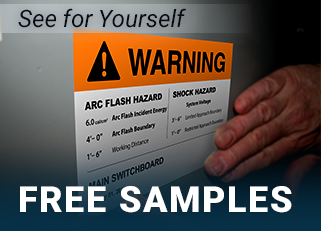Warehouse Safety Hazards
03
February,
2023
3 MINUTE READ

How to Safely Avoid Warehouse Hazards
Warehouses are statistically one of the most hazardous places to work. According to OSHA, warehouses have a fatality rate higher than the national average. To promote warehouse safety, OSHA created a series of regulations that can help workers avoid hazards.
Types of Warehouse Hazards
 Warehouse safety depends on workers being aware of their surroundings and knowing which hazards are most common in their workplace. The most common injuries in warehouses are from:
Warehouse safety depends on workers being aware of their surroundings and knowing which hazards are most common in their workplace. The most common injuries in warehouses are from:
- Forklifts. According to the National Safety Council, forklifts were the source of 78 work-related deaths and 7,290 nonfatal injuries involving days away from work in 2020.
- Hazard communication. Chemical burns can result from spills of un-labelled or mislabeled hazardous materials.
- Electrical, wiring methods. Electrocution due to sub-standard wiring, including temporary wiring, is a major cause of warehouse accidents.
- Electrical, system design. Electrocution can also result from electrical systems that do not meet OSHA standards in terms of design and maintenance.
- Guarding floor & wall openings and holes. Slips, falls, and trips account for 15% of accidental deaths in the workplace. Many of these injuries were the result of improper training or workers violating safety rules.
- Exits. Injury and death can result during a fire or other hazardous event when pathways to exits are obstructed and exit signs are not clearly visible.
- Mechanical power transmission. Serious injury including amputation can arise from improper usage of mechanical/power equipment and parts.
- Respiratory protection. Respiratory illness and injury can occur when a warehouse is not properly ventilated.
- Lockout/tagout. Lockout/tagout programs are crucial in preventing equipment from being accidentally energized and injuring associates.
- Portable fire extinguishers. Workplace fires and explosions kill hundreds and injure thousands of workers each year. Portable fire extinguishers are an important part of any fire prevention program.
- Repetitive motion such as lifting, reaching, pulling, and pushing According to the International Warehouse Logistics Association, most reported injuries in warehouses are the result of poor ergonomics.
- Failure to wear the correct personal protective equipment (PPE) Failing to wear PPE exposes workers to additional risks. PPE helps protect workers from respiratory, impact, and crushing hazards. One of the most commonly cited violations in warehouses comes from workers not using proper respiratory protection.
By teaching workers about the most common causes of injuries, workers can better recognize and avoid hazards, improving warehouse safety.
OSHA Warehouse Safety Regulations
OSHA has many regulations designed to keep people safe while working in warehouses. These regulations can be found in OSHA's General Industry Standard 29 CFR 1910. Some of the most commonly cited warehouse safety regulations are:
1910.178 This regulation requires businesses to train operators and perform routine forklift maintenance. It also contains strict rules for modifications which may affect the ability to safely operate forklifts. Employers must prove that modifications do not make forklifts more dangerous to operate (reduce visibility, stability, and so on).
1910.176 Closely related to 1910.178, this regulation requires facilities to maintain safe clearances and keep aisles clear. In addition, OSHA requires employers to use floor marking and signs to permanently mark passageways that will be used by forklifts and other powered vehicles. Materials also must be securely stored, so they won't collapse or fall on workers.

1910.1200 The second most cited regulation in warehouses, otherwise known as HazCom 2012, is designed to protect workers from hazardous chemicals through effective communication. To help protect workers, OSHA's Worker Safety Series: Warehousing requires that warehouses provide:
- Cleanup kits wherever chemicals are stored
- A written spill control plan
- Proof that workers have been trained to handle chemicals properly
- Proper PPE
- Secure storage for all chemicals
- Proper labeling for all chemicals
1910.132 Another important safety regulation concerns the use of PPE in the workplace. Specifically related to warehouse safety, OSHA found that workers are often not trained about the following:
- When to use PPE
- What PPE is needed
- How to properly wear PPE
1910.23 This regulation requires employers to guard openings in floors and walls. Every stairway, ladderway, hatchway, and chute opening must be guarded according to OSHA's standards. These requirements help keep workers safe from trips and falls.
The best way to keep workers safe is to follow OSHA's rules and regulations. These regulations are designed to mitigate most workplace hazards. Having the proper training, the correct PPE, the right equipment, and an approved safety plan will go a long way towards reducing injuries.
Warehouse Safety Solutions
Duralabel PathFinder floor marking and wayfinding solutions can protect workers, organize workflow, and direct traffic. Meanwhile, our DuraLabel line of printers and labeling supplies can be used to clearly mark hazards, communicate safety information, and improve warehouse safety. Whether you need safety signs, pipe markers, or equipment labels—Toro Max is ready to transport anywhere you are. Get help crafting a system that will provide the safety communication you need. Call 1-888-326-9244 and one of our experts will guide you through the process.
Learn more about warehouse hazards and safety solutions. Download our free OSHA Safety Signs Guide.
Read Next:
OSHA Requirements and Compliance
RELATED RESOURCES

Occupational Exposure
The term "occupational exposure" refers to a potentially harmful exposure to hazards chemicals in the ...
Read
Avoid Costly Mistakes When Shipping Hazardous Materials
Companies fail to meet basic hazardous materials shipping requirements every year. Recently, a Columbus ...
Read
Elevate Your Safety Plan: Hierarchy of Hazard Control
There are five levels to the hierarchy of hazard control: Eliminate the hazard. Substitute a less hazardous ...
Read.png)


